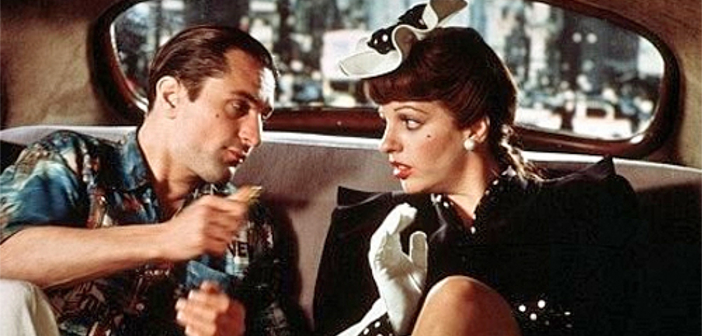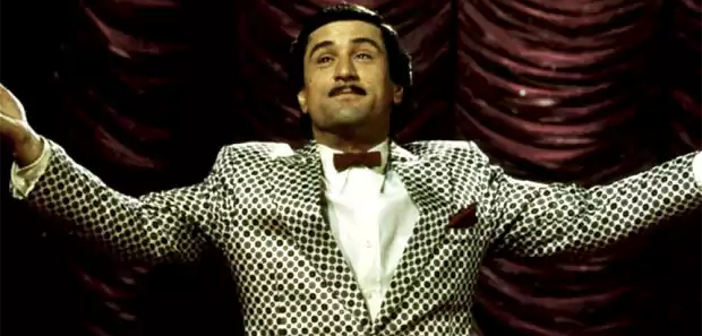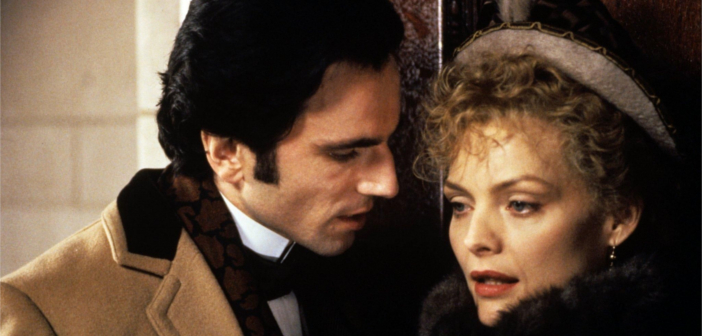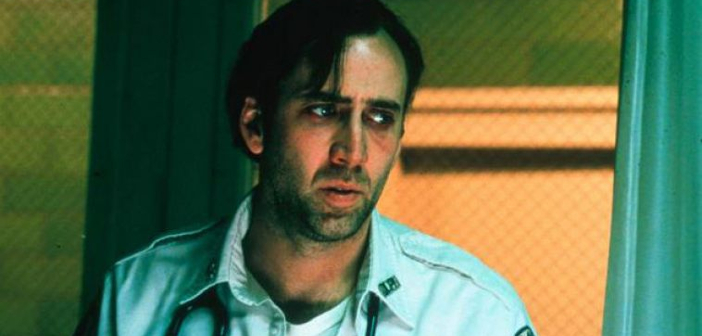Director Profile | The Underrated Movies of Martin Scorsese
To the public, Martin Scorsese is probably most famous for his gangster pictures. With his first crime entry Mean Streets, the director channelled a unique and ferocious energy which went on to mark some of his best-known work e.g. Goodfellas, Casino, the Oscar-Winning The Departed and most recently The Wolf of Street. However, between these movies, Scorsese experimented and took commercial risks. Some of these ventures were huge successes. Taxi Driver, on paper, is not a mainstream movie whatsoever, yet its “you talking to me” scene has passed into general parlance. Similarly, Raging Bull is a black-and-white film made during a time when that style of filmmaking was at its least popular and is still considered one of the greatest movies of all time.
Yet, not all these “palette cleansers” between Scorsese’s gangster films and collaborations with De Niro and DiCaprio were big successes. That said, with their lavish period décor, their odysseys into the N.Y. night life or their depictions of characters on the verge of a breakdown – they are, for the most part, very interesting. To celebrate the release of his meditative religious epic Silence – which itself could be interpreted as a palette cleanser to the sex-crazed debauchery of The Wolf of Wall Street – this piece will re-examine five of Scorsese’s most underrated works.
New York, New York (1977)
Scorsese’s 1977 collaboration with Robert De Niro is undeniably flawed. Centring upon a relationship between a singer (Liza Minelli) and a jazz musician (De Niro), the musical drama suffered a tumultuous production. In Peter Biskind’s book Easy Riders, Raging Bulls, the scholar writes about how Scorsese’s cocaine addiction was at its worst during the filming. He struggled to retain control on the production causing the first cut of the movie to reach a whopping four hours in length. By the time it was released in cinemas, eighty minutes were cut and it shows in the final product with Roger Ebert noting how the ending, in particular, feels “confused”.

That said, there is a lot to like about the film even if these qualities don’t necessarily merge into a coherent whole. Scorsese wanted to distance himself from the gritty realism that made him famous. He longed to pay homage to classic Hollywood, going as far as to crafting artificial sets to recapture the period of filmmaking he was trying to evoke. Filled to the brim with technicolour glamour, the scenery looks beautiful. Yet De Niro’s entertainingly more gritty performance of a pretty unlikable person (he is selfish, narcissistic and arrogant) feels like it should be in a different, more modern movie a la Taxi Driver.
Instead, the standout of the film is Liza Minelli who absolutely shines throughout, particularly in the musical sequences – which are the most consistently great part of New York, New York. The climactic moment where her character sings the titular tune is absolutely barnstorming. Also, there is something very admirable about a 70’s movie featuring a female protagonist who leaves her over-bearing husband and finds fame and success all on her own.
The King of Comedy (1983)
Ahead of its time in almost every way, this part satirical comedy, part chilling character study stars Robert De Niro, in perhaps his finest turn, as mentally deranged struggling stand-up Rupert Pupkin. Craving fame, the central character, along with the similar unhinged Masha (Sandra Bernhard – a perfect example of Scorsese’s dynamite casting), hatch a plan to kidnap renowned comedian and talk-show host Jerry Langford (played in meta-fashion by Jerry Lewis). Rupert hopes his victim will give him his fifteen minutes of stardom.

Divisive upon first release, yet now looked upon as a cult classic, The King of Comedy has aged like the finest wine. Its themes regarding the corrosiveness of celebrity worship feel increasingly relevant in today’s world where more think-pieces than ever are being written about celebrities being mistreated by “fans” and where people are as desperate as ever to achieve notoriety as fast as possible, no matter the cost.
It has also been hugely influential. One could read the film’s humour – the type of cringe comedy that makes one want to turn away due to its stifling uncomfortableness – as a forerunner to shows that emerged almost twenty to twenty-five years later like The Office or Louie. Plus, it’s strange blend of satire and dark character drama can be found in acclaimed recent pictures like Foxcatcher and Nightcrawler.
https://www.youtube.com/watch?v=2Q1mrSr9z70
After Hours (1985)
One could describe Scorsese’s largely forgotten 1985 picture as a comedic counter-point to Stanley Kubrick’s Eyes Wide Shut: the major source of conflict in both arises from a man who foregoes his usual routine in favour of a post midnight voyage through New York. Looking for excitement and freedom, the protagonists of the two movies find only lunacy and leave destruction in their wake because, as a character in Scorsese’s picture states: “Different rules apply when it gets this late”.

Funny but also surprisingly dark and tense, After Hours sees Scorsese capturing on-screen the illicit thrill of being pushed out of one’s comfort zone. It’s, at times, sexy, surreal and twisted but consistently entertaining and at ninety minutes, is certainly Scorsese’s tightest movie. Also worth noting is the nostalgic cast largely comprised of 80s rising stars such as Griffin Dunne, Rosanna Arquette, Linda Fiorentino, John Heard and Teri Garr – who, on the strength of their work in After Hours, should have become the A-listers people assumed they would be.
The Age of Innocence (1993)
Long but lavish, Scorsese’s first collaboration with Jay Cocks (with whom he later co-wrote Gangs of New York and Silence) was an adaption of Edith Wharton’s novel of the same name. Daniel Day-Lewis stars as Newland Archer, a lawyer about to be wed to May Welland (Winona Ryder) – a marriage that would link the lovers’ high society families together. However, the emergence of May’s cousin, Ellen (Michelle Pfeiffer), a woman sullied by rumours and whose reputation threatens the union. Things are made more complicated when Newland forms an attraction to the new arrival.

The three lead performances are terrific. Day-Lewis manages to make a character, who has been described by critics as an “indecisive little newt” feel authoritative and Pfeiffer, despite little to no nudity or sexual conduct, just drips sensuality. However, Ryder steals the spotlight from the two. Her performance at first feels a little stilted and perhaps too rehearsed as the kind and simple unsuspecting wife. Yet, once the viewer realises that May’s innocence is indeed an act which she uses to bind Newland to her, one comes to understand how layered Ryder’s acting is throughout the entire film.
One can tell how much craft went into the re-creation of upper-class mid-19th century New York. The house in which May’s family matriarch Mrs. Mingott (Miriam Margolyes) resides – which had to re-designed when the owner became too large to walk up the stairs – is a magnificent creation. What’s also interesting is how Age of Innocence and Gangs of New York take place in the same city at around the same time. At moments, one feels that if Scorsese turned his camera away from the high-society functions, you’d find DiCaprio’s Amsterdam Vallon pick-pocketing. Another cool Gangs of New York comparison is that all of Jay Cocks’ collaborations, including Silence, end the same way. They all jump forward a number of years and the last shot links the themes of the movie together in a very poignant way, while also rendering what happened in the story totally pointless.
Bringing Out the Dead (1999)
Roger Ebert famously described Taxi Driver as a cinematic depiction of “hell”, a movie where “people are seen almost in flashes, as if darkness threatens to close over them altogether”. The same could be said about another Paul Schrader script, directed by Scorsese – 1999’s Bringing Out the Dead. Almost a companion piece to Taxi Driver, the film stars Nicolas Cage as another vehicle owner, this time an ambulance driver/paramedic who cruises the N.Y. streets nocturnally (which based on Scorsese’s filmography are a Dante’s Inferno of sleaze). Cage’s Frank Pierce is burnt out after too many late-night shifts. Hallucinating and becoming haunted by the ghosts of those he could not save, he must keep it together as a new drug named “Red Death” sweeps the streets – leaving those who take it in cardiac arrest.

Nobody writes about New York like Schrader and no one visualises it like Scorsese – the religious allegory and imagery so rich, the atmosphere and colour palette so authentic but surreal. Yet, despite this, the film only made half its budget back. One presumes its subject matter was too grim for cinema audiences at the time. However, I’d argue that despite the movie going to some very dark places, Scorsese’s natural restless energy – no one swings a camera around like the director – keeps the pace snappy and bouncy without sacrificing any of Schrader’s weighty themes. Meanwhile, like all the auteur’s films, Bringing… is impeccably cast. Cage was at that stage in his career where his craziness was present, yet he wasn’t a parody of himself and could reign the mania in and internalise. The actor is an utterly commanding presence backed up by a barrage of phenomenal supporting performances – most notably Ving Rhames and Tom Sizemore as fellow paramedics and Patricia Arquette as the grieving daughter of one of Frank’s patients.

